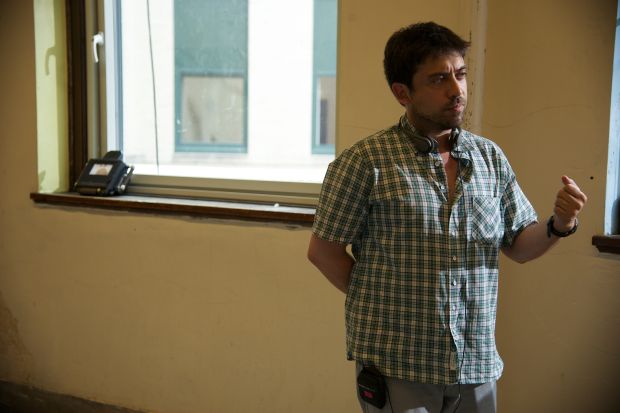WASHINGTON (CNS) — It’s easier to win an award at the annual Sundance Film Festival, because Sundance gives so many of them, than to win the Signis Award in the United States.
Rarer still to win them both with the same film. But that’s what happened with “Me and Earl and the Dying Girl,” a funny drama about awkward teen angst with mortal illness coursing through the plot.
“Me and Earl,” in winning the Signis Award at April’s Filmfest DC, was cited by one jurist for being “exceptionally well written and directed, with top performances by a young cast.” The same jurist, Belgium’s Karel Deburchgrave, called it “both a work of art and a warm affirmation of human possibility.”
See the movie review here.
[hotblock]
The movie also received Sundance’s Grand Jury Prize because it “comprises the best of both great comedy and drama,” as well as Sundance’s Audience Award. It also has won prizes this year from the Nashville Film Festival and the Heartland Film Festival.
But to director Alfonso Gomez-Rejon, awards are, at best, a means to an end.
The commercial aspects are at best secondary to him. “What is worthy of being on screen?” he asked aloud. “What we all wanted to do was make a good movie. The awards give us the recognition that we were all so lucky to get. It gives us a chance to be seen.”
In a telephone interview with Catholic News Service to promote the film, which opened June 12, Gomez-Rejon added, “I personally didn’t make this movie to put fannies in the seats. I was given the opportunity to make a comedy to express my feelings of what I was going through at the time, as tribute of love to someone else.”
That someone else was his father, who died not long before Gomez-Rejon was brought on to direct the film. “Me and Earl” exemplifies “how much I love movies and how much I miss my father,” Gomez-Rejon said.
“His name is Dr. Julio Gomez-Rejon. He was the best man I’ll ever know. The most ethical being, the most compassionate man, the funniest. When you blink and he’s not there anymore, you have a hard time making sense of that,” he said. “The message of that: You get a sense that maybe there is some sort of continuum. Even though the shape isn’t in the same way, you keep him alive by the mastery of filmmakers.” The images, Gomez-Rejon said, preserve his father’s legacy for himself and for others.
“Me and Earl” parallels Gomez-Rejon’s situation. With Rachel, (“the girl”) who has leukemia, asks Greg (“me”) and Earl to make a movie for her — she’s enjoyed seeing their spoofs of classic films, such as “Senior Citizen Cane” and “Gross Encounters of the Turd Kind,” which echoes the director’s “how much I love movies” remark — Greg comes up with the filmmaker’s version of writer’s block.
[hotblock2]
Gomez-Rejon isn’t currently encountering a creative cul-de-sac, but neither is he juggling multiple projects that would interfere with a promotional tour for “Me and Earl,” or vice versa.
“It so much in my present. I’ve never done this before,” he told CNS. “The movie has to be seen. I want to talk about the movie, I want to talk about my dad, I want to talk about the crew, I want to talk about the process. I want people to see the movie. You did your part, but the journey’s not over until you hope the people embrace it.”
Gomez-Rejon added, “You don’t want it to be forgotten. You move on, you make a film, you finish, you are rejected or you won, and it’s hard to let go. I don’t want to let go until I’m forced to. You want people to see it, you want people to discover it. You want to inspire ideas.”
CNS’ assistant director for media reviews, John Mulderig, was far less lavish in his praise of “Me and Earl” than the Signis jury. Calling the movie “sensitive — though ultimately shallow,” Mulderig said, “Viewers will need to come to the story with their faculties for discernment fully outfitted.
While the movie’s primary characters are teens, he added, “parents should be advised that bringing any but the most mature teens along would be a risky idea.” The movie was classified A-III — adults — for “mature themes, unintentional drug use, fleeting images of pornography with implied masturbation, brief, mild irreverence, several uses of profanity, at least one audible and a few bleeped F-words as well as much crude and crass language.”




Share this story